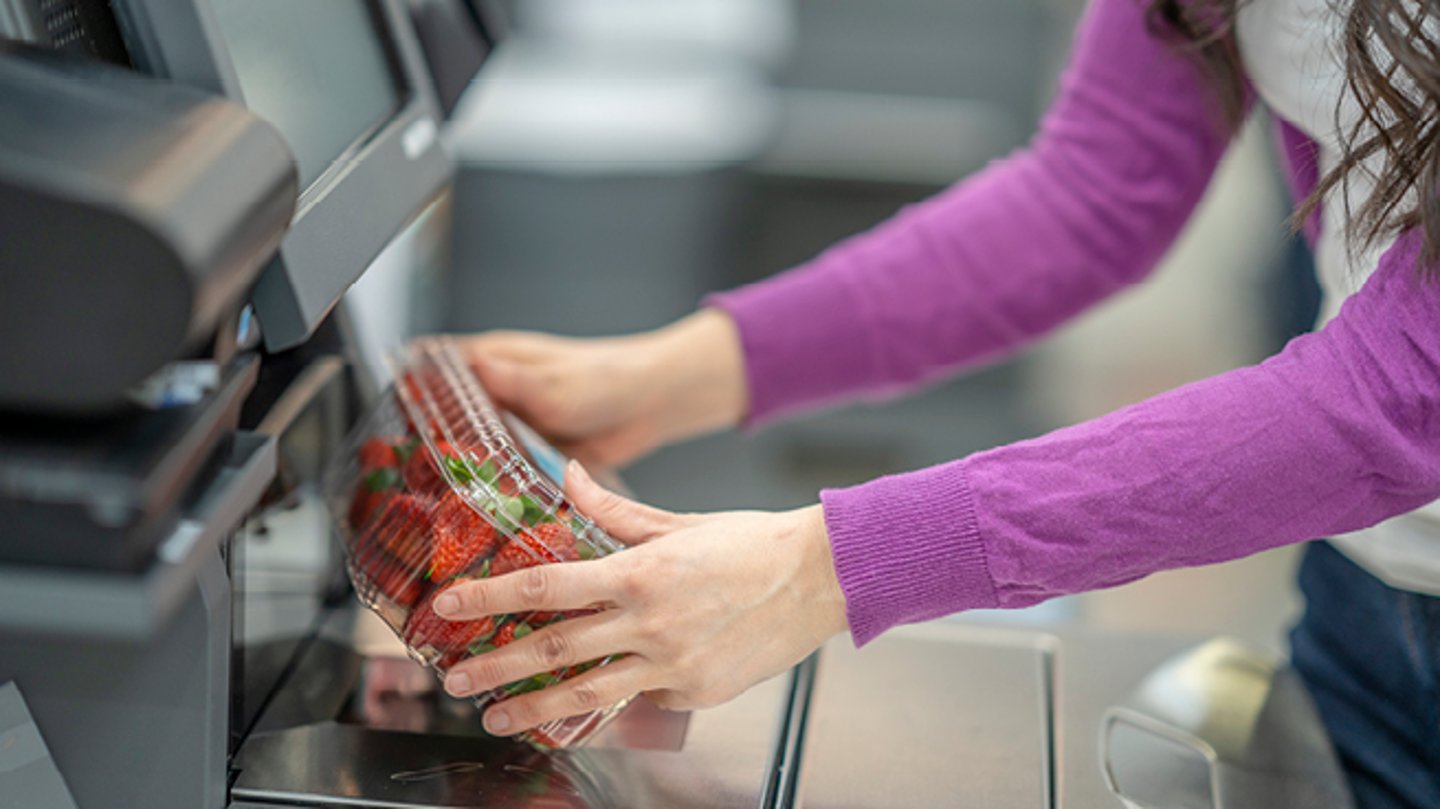As tech improves, shoppers more likely to choose self-checkout at grocery stores
For years, grocers have been looking to self-checkout stations as a way to reduce labour costs, often directing reluctant consumers this way in spite of issues with not-so-intuitive technology. But now, for the first time, a significant number of shoppers are actively seeking a frictionless shopping experience that self-checkouts can finally accommodate.
According to the latest data from The Food Industry Association (FMI), 29% of transactions at food retailers were processed through self-checkout in 2020, up from 23% the year prior. In the meantime, major retailers like Kroger and Walmart are piloting self-serve checkout-only stores in locations throughout the United States and Canada.
“More and more, technology is making the self-checkout experience flawless – I can’t remember the last time I had problems using these systems, compared to years ago,” says Sylvain Charlebois, senior director of the Agri-Food Analytics Lab at Dalhousie University in Halifax. He points to a 2021 survey conducted by Dalhousie in partnership with Caddle (the largest daily active survey panel in the Canadian market), showing that 75% of Canadians have used self-checkouts while visiting the grocery store at least once in the past six months. Moreover, 85% of respondents said they were satisfied with their experience and 47% said they’d be willing to visit a cashier-less grocery store in the future.
“I think before COVID-19 it was seen as more of an experiment, but the commitment is quite clear now,” says Charlebois. “We’re finally seeing retailers adopting the right technologies to make the exit experience flawless for consumers.”
Factors driving self-checkout
While the pandemic was destructive on so many fronts, industry experts agree it was a catalyst in accelerating the adoption of self-checkouts. “Along comes the pandemic and people don’t want to linger in stores anymore, they don’t want to talk to people and so self-checkouts get a very big turbo boost,” says Marty Weintraub, partner, national retail leader at Deloitte Canada.
Retailers are also feeling the heat with current labour shortages in the sector. Grocers know long lines and poor service that deter customers from shopping, will inevitably feed through to their bottom lines; self-checkouts can help. The 2022 Global Self-Checkout Systems Industry report notes that the global market for self-checkout systems is expected to grow 11.9% year over year to 2026. Supporters of self-checkout also contend that existing staff can be better used to provide direct assistance as needed and avoid repetitive tasks that can be automated.
Weintraub says another key factor contributing to the increasing adoption of self-checkouts is the variety of technology options emerging, from traditional, scan it yourself versions to A.I.-driven, computer vision options that do the scanning for you (see more on these technologies below). “The checkout process is the highest friction pain point in the shopping experience, especially in food, but we’re going to see more and more technologies that address that,” he says, noting that grocery retailers are increasingly experimenting with cashier-less store formats, similar to the one Amazon pioneered with its Amazon Go model in 2018.
What’s stalling wider adoption?
There’s no doubt that cost is still a factor preventing widespread adoption of these technologies, especially when it comes to computer vision, says Weintraub. “Obviously a store of 50,000 to 100,000 square feet with 80,000 SKUs is a different story than [putting cameras] into a small footprint format,” he explains. “But the technology is getting cheaper and more accurate and people are starting to be more comfortable with being watched.”
Another challenge is that there are still consumers who aren’t keen on a cashier-less future. If reaction to Tesco’s plans to replace staff tills with more self-checkout is any indication, some are vehemently opposed to it. Nearly 240,000 people signed a petition started by 69-year-old retiree Pat McCarthy this summer, calling on the British multinational grocer to stop the rollout of self-checkout machines and bring staff back. “What used to be a great shopping experience has now become physically difficult, overwhelming and a nightmare,” she wrote in the petition started on change.org.
Sentiments from Canadians and Americans on social media on this side of the world indicate a similar attitude with a “say no to self-checkout” Facebook group and anti-checkout posts actively circulating.
And while self-checkout technology has vastly improved of late, Charlebois notes that the systems aren’t universally welcoming just yet. “Hundreds of thousands of Canadians live their lives with cash only, for example, and some of these machines don’t take cash,” he says. “Plus, when I look around and see who is struggling with the technology, it’s often a senior.” That’s why for the next while at least, he says it’s essential for grocers to recognize that some demographics aren’t comfortable with self-checkout, so human intervention is still critical.
Charlebois also suggests grocers find ways to incentivize shoppers to self-checkout. “Over the long-term, the perception will likely disappear but for now there is a lot of work to self-checkout at the grocery store compared to buying a T-shirt in a retail setting,” he says, noting that people generally prefer assistance when they’re checking out more than 10 items.
“I don’t think we’ll ever get to the point where you’re completely on your own—a hybrid method is more likely where there are [live] people making self-checkout more palatable,” says Ransom Hawley, founder and CEO of Caddle. “But as technology continues improving and removing the friction from checking out, I think Canadians are going to embrace it.” In fact, results from a survey conducted by Caddle in September 2022 show that not only are 48% of Canadians across demographics extremely or moderately familiar with ‘scan-and-go’ technology, 65% are somewhat or very likely to use self-checkout for items other than grocery, too.
This article was first featured in Canadian Grocer’s November issue.


